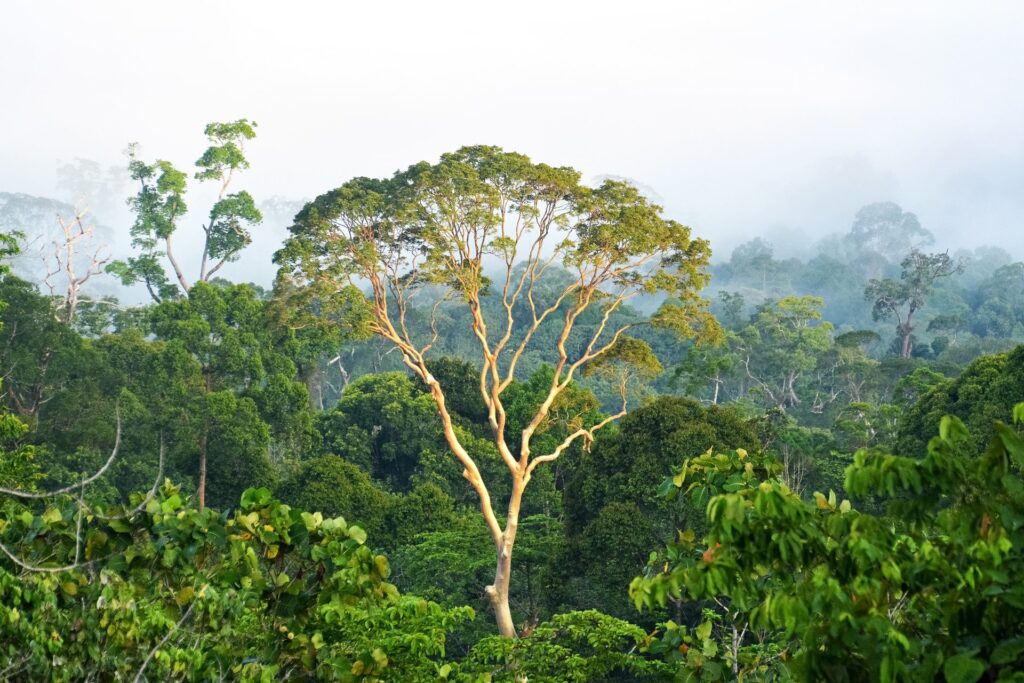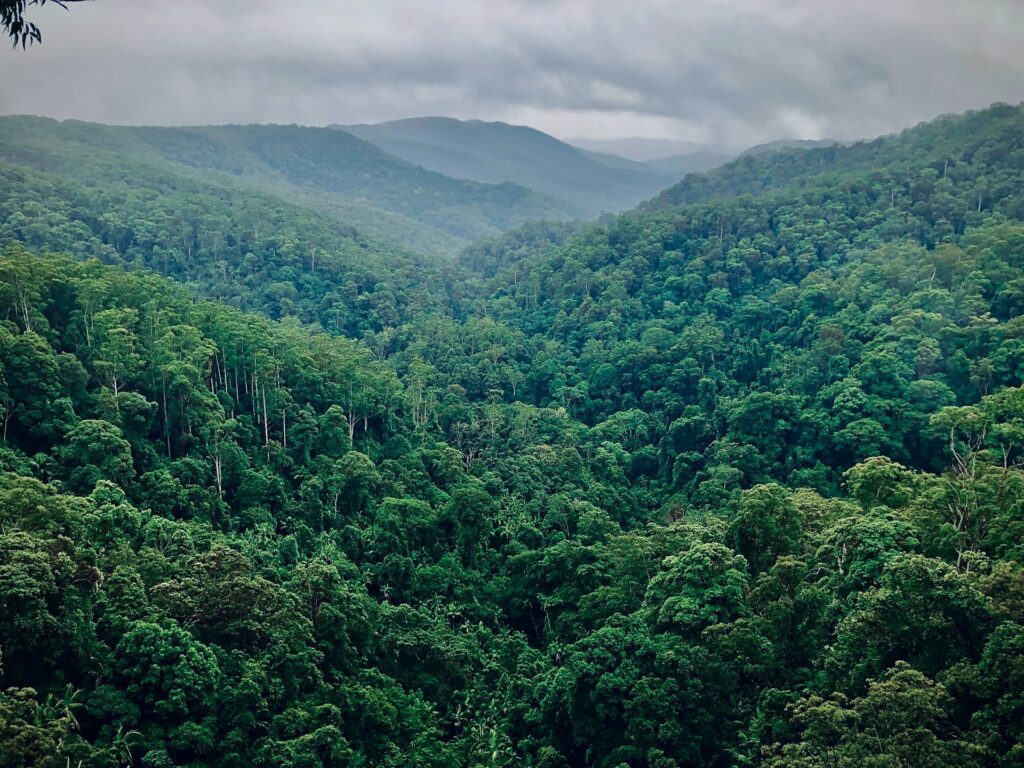Why governments seem to not see the wood for the trees when it comes to addressing deforestation – Insights from COP26 in Glasgow

A lot of the aftermath of this year’s Climate Change Conference in Glasgow (commonly called COP26, as it is the 26th meeting of the parties of the UNFCCC) debates was focused on debates whether or not this it has been a failure or not. Not only scientists and climate activists have proclaimed the event to be the very last opportunity to set the course for limiting global warming to 1.5°C – the more ambitious target of the Paris Agreement – but also a growing number of governments came to this conclusion. While the negotiations did produce some outputs, immediately after the event many voices raised the alarming concern that, once again, the pledges to mitigate climate change impacts were severely insufficient. With this in mind, it is even more important to look at the successes of COP26 and analyse how likely the pledges will see implementation. If governments fail to comply with these, the shortcomings to reach even the less ambitious target of reducing global warming to 2.0°C would be substantial and the fallout would be devastating. Unfortunately, past experiences have shown that pledges and promises too often have only proven to be empty words. Do the COP26 successes exist on paper only?
One major breakthrough at COP26 was the pledge to end all forms of deforestation by 2030. Scientists incessantly have stressed the fact that without stopping deforestation immediately, the 1.5°C target would become out of reach no matter what other mitigation measures would be taken, potentially leading towards a “Hothouse Earth” scenario, in which temperatures would inevitably surpass this said threshold (WRI 2020). Thus, deforestation was a major topic at COP26, and more than 100 government representatives signed the declaration, including critical states like Brazil and China, which in recent years have not been too fond of tackling the global problem of deforestation. Taken together, the signatory states cover more than 85% of all forested land. Despite this commitment, there are manifold reasons for concern. One could, for example, argue that the need to stop all deforestation “immediately” does not really match the pledge which aims to end deforestation by 2030 – which leaves a staggering nine years to continue with business as usual. The commitment includes providing 12 billion dollars of finance from twelve countries from 2021 to 2025 and 7.2 billion dollars of private-sector funding while CEOs from over thirty financial institutions pledged to end investment in undertakings linked to deforestation. In addition to that, governments representing 75% of global trade with key commodities connected to deforestation (timber, cocoa, palm oil, soy, among others) also signed a new Forest, Agriculture and Commodity Trade (FACT) statement to expand sustainable trade and improve transparency in supply chains. Despite all that, experts were quick to critizise the declaration, stating that given what is at stake, more non-binding pledges will not get the job done.

The importance of forests for Earth’s climate is undisputed. Tropical rainforests alone are the largest storers of terrestrial carbon compared to any other ecosystem (Pan et al. 2011) and draw down up to 1.8 gigatons of carbon per year. Globally, this translates to the removal of roughly 20% of annual anthropogenic greenhouse gas emissions from the atmosphere (Mulvaney 2021). In addition to that, forests bear crucial importance for biodiversity and are home to more than half of the Earth’s land-based species, hundreds of thousands of indigenous people, and are also fundamental sources of freshwater. Yet, between 1990 and 2020, deforestation was the cause for a net decline of forested land of approximately 178 million hectares, an area more than three times larger than France (WRI 2020). From 2015 to 2020, 10 million of hectares were lost per year, which is less than in the 1990s but apart from direct human interference, other stressors are becoming more and more threatening, including wildfires, pests, and droughts – while global forests are a fundamental part of mitigating climate change, they are themselves severely affected by it.

The overarching question is whether or not governments and policymakers have truly understood these facts of the case and while the pledge to end all deforestation is certainly a step in the right direction, serious concerns prevail. The COP26 declaration is not the first effort to tackle deforestation, global leaders have been there before. In 2014, the New York Declaration on Forests similarly set out the goal of ending all deforestation by 2030 with the intermediate target of a 50% reduction by 2020. The target was not met, instead, there was a 41% increase of cleared forested land in the years following the declaration. Although the New York declaration was signed by far fewer countries compared to the COP26, skepticism concerning the implementation is more than appropriate. This skepticism is further fuelled by the imprecise language regarding how to actually achieve zero deforestation, leaving significant room for differing interpretations and misunderstandings. Only days after having signed the declaration at COP26, for instance, Indonesia, home to the third-largest rainforest, already called it “unfair”, stating that the economic growth of the country would not be stopped for the sake of deforestation. Environment minister Siti Nurbaya Bakar went on to underline that the country’s forests are part of its natural wealth. Stirring even more confusion, however, was the statement which denied that deforestation is even part of the pledge as long as the cleared land is used for plantations (e.g., for palm oil or timber farming). This underlines serious conceptual and definitory differences among stakeholders. Similarly, doubts have emerged about Brazil, home to the largest remaining tropical rainforest, which did sign the pledge despite just reaching a 15-year-high of deforestation levels. How urgently action is needed is highlighted by the shocking fact that the Amazonian rainforest now seems to release more carbon than it is absorbing. Thus, scientists have warned that the region is close to facing a rainforest-to-degraded-savannah tipping point.
Blaming the Global South, where the most forested area is found and thus the highest levels of deforestation are occurring, however, would not only be far too simple, but also unjust. The drivers for deforestation are context-specific and complex. Agricultural expansion plays the biggest role, which in turn is influenced by the decreasing efficiency and production of current agricultural lands due to climate change. Simultaneously, demand for food is increasing caused by shifting consumption patterns and a growing population. The FAO estimates that by 2050, global agricultural production has to be at least 60% higher compared to the status quo to satisfy this demand (FAO 2021). To make ends meet and sustain their livelihoods, many small-scale farmers in the Brazilian Amazon, the Congo Basin, or Indonesia are forced to expand their croplands into the forest to compensate for yield gaps caused and exacerbated by climate variability. This accounts for many subsistence farmers in Sub-Saharan Africa as well. Apart from industrial farming practices, the latter constitutes a rather new trend contributing to deforestation, including the increasing numbers of smallholders growing cash and commodity crops like cacao, coffee, and palm oil; products often destined for export to the Global North where demand is high (WWF 2020). Adding to that is the sometimes illegal trade with timber to supply international markets. Among the most vivid causes is also the continuously increasing demand for meat products; especially cattle farming is contributing massively to deforestation, not only due to slash-and-burn practices to provide grazing land, but also due to fodder production. Globally, 77% of global soy crops are used for animal feed (Fraanje & Garnett 2020). Hence, a beef-free diet could free up about 2 billion hectares of land which could be potentially used for restoration and afforestation (Poore & Nemecek 2018).
All this serves to show that deforestation is not only about deforestation per se but rather is connected to numerous other factors as well. Deforestation is crucially linked to and affected by food and nutrition security, fair trade and trade regulations, efforts to secure livelihoods of small-scale and subsistence farmers, value chains dictated by corporations of the Global North, where also excessive consumption behaviour and food waste is prevalent, justifying calls for demand-side measures such as necessary dietary changes. After all, the issue of deforestation is almost stereotypical for structural and systemic problems of climate conferences. The talks and texts resulting from COP26 treat the symptom deforestation, but the causes are not sufficiently taken into regard. Unfortunately, these causes, which are far from presenting a complete picture of the problem, were raised only unsatisfyingly at COP26 and are mentioned only half-heartedly or not at all in the declaration to end deforestation by 2030. Boris Johnson, host of the COP26 summit declared somewhat pathetically: “These great teeming ecosystems – these pillared cathedrals of nature – are the lungs of our planet.” This certainly is true, yet the COP26 declaration regarding deforestation is in great danger to become just another toothless tiger trying to tackle a problem of utmost global relevance. Even though a perfectly suitable solution addressing all the connected factors causing deforestation cannot be expected from a two-week event bringing together thousands of stakeholders, the understanding of crucial interlinkages causing deforestation was addressed insufficiently (at best). Notably, once again representatives of the Global South and especially Indigenous Peoples, usually the ones most severely affected by deforestation, were underrepresentated due to a lack of access to vaccination and ever-changing travel regulations. US president Joe Biden called Indigenous Peoples “the guardians of forests and nature”, yet Indigenous People critizised being tokenised at COP26 while not given the opportunity to actually make an impact (Lakhani 2021). All this, the lack of transparency, adequate representation and non-binding nature of such declarations lead to a lack of contentual precision which all too often has proven to turn into a lack of compliance. Once again, one must question whether the sense of urgency, as well as the sense of responsibility, is really there among governments and policymakers. They seem to not see the wood for the trees.
Sources & additional information:
- FAO et al. (2021): The State of Food Security and Nutrition in the World 2021. Rome.
- — (2020): The State of the World’s Forests 2020. Forests, biodiversity and people. Rome.
- Fraanje, W. & T. Garnett (2020): Soy: food, feed, and land use change. Food Climate Research Network.
- Lakhani, Nina (2021): “A continuation of colonialism”. Indigenous people say their voices are missing at COP26. In: The Guardian.
- Mulvaney, Kieran (2021): Will the COP26 global deforestation pledge really save forests? In: National Geographic.
- Pan, Yude et al. (2011): A large and persistent carbon sink in the world’s forests. In: Science, 333 (988).
- Poore, Joseph & Thomas Nemecek (2018): Reducing food’s environmental impacts through producers and consumers. In: Science, 360 (6392).
- Sheikh, Pervaze A. et al. (2021): Reduction in Emissions from Deforestation and Forest Degradation (REDD+). In: Congressional Research Service, No. R46952.
- World Resources Institute (2020): Global Forest Review.
- WWF (2020): Deforestation Fronts: Drivers and Responses in a Changing World.